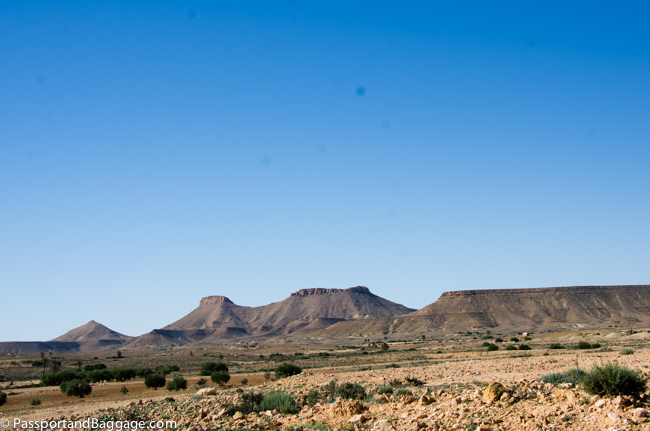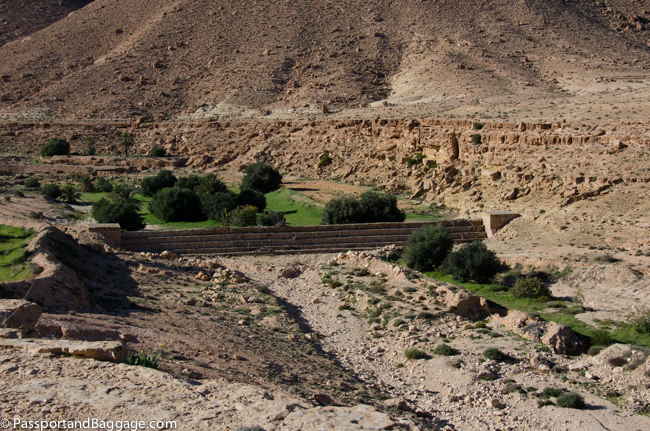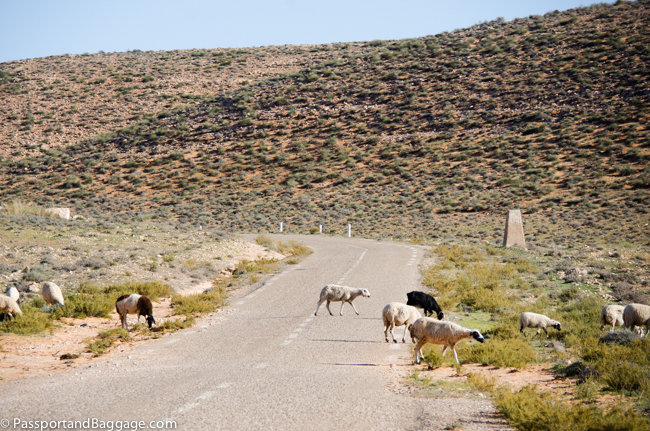December 4, 2019
The south of Tunisia is characterized by an arid climate where rainfall does not exceed 2 to 7 inches per year. There are no significant water sources other than rain. People have struggled for centuries against water shortage, by building wells where possible, but mainly through an ingenious system that makes use of the natural valleys and ravines, where uncontrollable torrential waters flow on those rare occasions when it does actually rain in the desert.
The system is based on a series of batteries made of small earth embankments (jessour) with surface spillways, that are built in order to slow the speed of outflowing rainwater and store it, along with the soil that the rains bring down with the water, from the mountains and slopes.
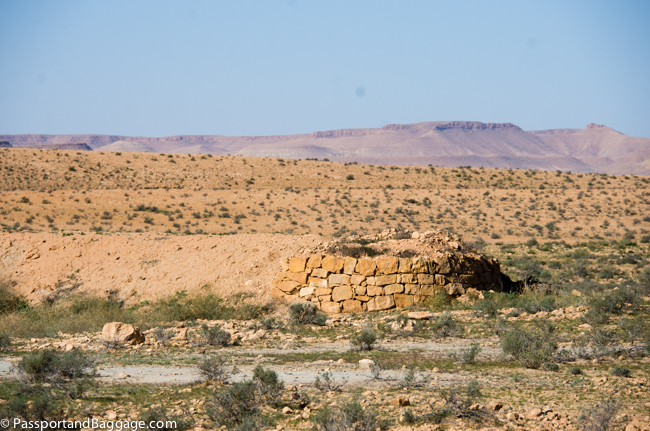
Jessour are based on a retention dam made of earth and/or stone. They are built perpendicular to the runoff. The dam stops and stores the runoff and supplies in this water to the crops. While difficult to see the jessour in the photo is the long dirt mound in the front then finished with a small stone wall.
Water retention increases soil moisture throughout the year, helping to counter the natural evaporation effect. The sediment brought down with the rain progressively enriches the soil with mineral and organic matter.
As a result, jessour not only makes the cultivation of cereals possible but olive trees, figs trees, and date palms can thrive as well.
One part of the systems are dams usually equipped with one or two spillways, that discharge the excess water to the downstream side of the jessour. If the impluvium is large enough (as seen in the above photo) several jessour can be connected with each other. The proper design is important in making sure the flows are correct to keep the dams from breaking and to ensure the downstream impluviums receive enough water.
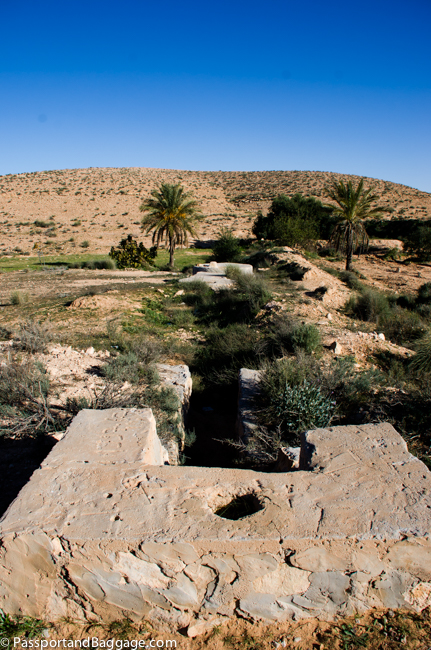
Cisterns or storage tanks collect rainwater for storage to be used as drinking water for both humans and animals or irrigation. A cistern is a man-made hole in the soil with a gypsum or cement coating.
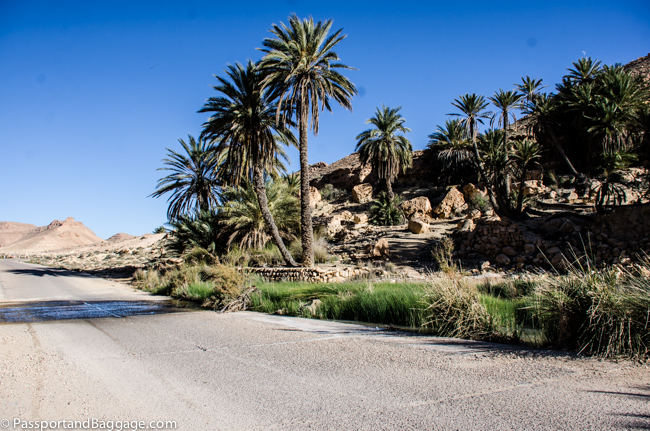
Just down the road from the town of Chenini is an actual oasis. The water from the spring runs across the road making it noticeable, but these are very few in this arid land.
While desert farming is precarious, barley is produced in quantity.
Throughout this arid area, you will find sheep grazing most everywhere.
